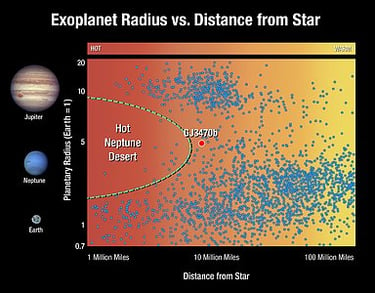"What Are Exoplanets? Discovering Worlds Beyond Our Solar System"
What are exoplanets? Discover how we find alien worlds, their potential for life, . Explore the cosmos now! Picture a universe filled with planets beyond our solar system—some scorching hot, others potentially teeming with life. These are exoplanets, and they’re revolutionizing our view of the cosmos. But what exactly are exoplanets, and how do we detect them? In this beginner-friendly guide, we’ll dive into the science of exoplanets, uncover the methods behind their discovery, and explore why they’re key to humanity’s quest for alien life. Backed by NASA, the James Webb Space Telescope (JWST), and cutting-edge research, let’s embark on a cosmic adventure!


What Are Exoplanets? A Clear Definition
Exoplanets, or extrasolar planets, are planets that orbit stars outside our solar system. Unlike Earth or Jupiter, which circle the Sun, exoplanets orbit distant stars, from nearby Proxima Centauri (4.2 light-years away) to galaxies millions of light-years distant. Since the first confirmed exoplanet in 1992, astronomers have cataloged over 5,800 exoplanets as of April 2025, with thousands more candidates awaiting confirmation (source: NASA Exoplanet Archive).
Exoplanets are incredibly diverse:
Hot Jupiters: Massive gas giants orbiting close to their stars, reaching thousands of degrees.
Super-Earths: Rocky planets bigger than Earth but smaller than Neptune.
Mini-Neptunes: Smaller gas planets with thick, hazy atmospheres.
Terrestrial Planets: Earth-like, rocky worlds, some in the habitable zone where liquid water could exist.
This variety challenges our understanding of planetary systems, showing that our solar system is just one of many possibilities.
How Do We Find Exoplanets?
Detecting exoplanets is like finding a needle in a cosmic haystack—stars are millions of times brighter than their planets. Yet, advanced telescopes like Kepler, TESS, and JWST use clever techniques to spot them. Here are the primary methods:
1. Transit Method
How It Works: When an exoplanet crosses (transits) its star, it blocks a tiny fraction of the star’s light, causing a dip in brightness. Telescopes like TESS measure these dips to confirm planets.
Impact: This method has discovered over 70% of known exoplanets, including the TRAPPIST-1 system with seven Earth-sized planets (source: NASA.gov).
Fun Fact: Transits reveal a planet’s size and orbit, helping identify habitable zones.
2. Radial Velocity (Wobble Method)
How It Works: A planet’s gravity makes its star wobble slightly, shifting the star’s light spectrum. Spectrographs detect these shifts to infer the planet’s mass and orbit.
Impact: Used to find the first exoplanet, 51 Pegasi b, in 1995, and still key for confirming planets like Proxima Centauri b.
Fun Fact: This method works best for massive planets close to their stars.
3. Direct Imaging
How It Works: Telescopes block a star’s light with a coronagraph to photograph orbiting planets directly. JWST excels at this, capturing images like HIP 65426 b in 2024 (source: ESA).
Impact: Rare but powerful, it reveals planet atmospheres and compositions.
Fun Fact: Best for young, hot planets far from their stars.
4. Gravitational Microlensing
How It Works: A star’s gravity bends light from a distant star, acting like a lens. An exoplanet’s gravity adds a detectable spike in this effect.
Impact: Finds distant or rogue planets (not orbiting stars), like MOA-2007-BLG-192Lb.
Fun Fact: This method relies on rare cosmic alignments, making it a long shot.
Why Exoplanets Matter: The Hunt for Life
Exoplanets captivate us because they could hold the key to answering: Are we alone? Here’s why they’re a big deal:
Habitable Zones: Planets in the “Goldilocks zone” (just right for liquid water) are prime targets for life. Kepler-452b, dubbed “Earth’s cousin,” orbits in this zone.
Atmospheric Insights: JWST’s 2024 analysis of WASP-96b detected water vapor, while K2-18 b showed potential biosignatures like dimethyl sulfide (source: Nature). Future observations might find oxygen or methane, hints of life.
Planetary Diversity: Exoplanets reveal that planetary systems vary wildly, reshaping theories of planet formation.
Future Missions: ESA’s ARIEL (launching 2029) will study 1,000 exoplanet atmospheres, while NASA’s Habitable Worlds Observatory (2040s) aims to image Earth-like worlds.
The TRAPPIST-1 system, with three habitable-zone planets, remains a top candidate for life searches.Dive deeper into the search for life with our guide on Astrobiology 101 (#).
Recent Breakthroughs in Exoplanet Research
The exoplanet field is booming, thanks to new tech and telescopes. Key 2024–2025 highlights:
JWST’s Discoveries: In 2024, JWST found a nitrogen-rich atmosphere on LHS 1140 b, suggesting habitability (source: Astronomy). Its K2-18 b data hinted at biosignatures, sparking debate.
TESS Success: NASA’s TESS mission added 400 exoplanets in 2024, including TOI-700 e, an Earth-sized planet in the habitable zone (source: NASA.gov).
Proxima Centauri b: Studies of our closest exoplanet (4.2 light-years away) suggest a rocky surface and possible water (source: ESO).
AI Advancements: Machine learning, like Google’s algorithms, is uncovering overlooked exoplanets in Kepler and TESS data.
These breakthroughs make 2025 a thrilling year for exoplanet exploration.
Challenges in Exoplanet Discovery
Finding exoplanets isn’t easy. Major hurdles include:
Distance: Even nearby exoplanets are light-years away, limiting direct observation.
Starlight Glare: Stars outshine planets by millions of times, requiring advanced tech like JWST’s coronagraph.
Data Overload: Telescopes produce terabytes of data, needing AI to filter signals from noise.
Confirmation: Candidates require multiple observations to rule out false positives, delaying discoveries.
Despite these challenges, astronomers are making leaps with each new mission.
Why You Should Care About Exoplanets
Exoplanets spark wonder and curiosity, connecting us to the universe. They challenge our place in the cosmos, inspire sci-fi dreams, and fuel hope for finding alien life.
source :https://x.com/NASAExoplanets ,https://exoplanets.nasa.gov/blog-newsletter-subscribe/


